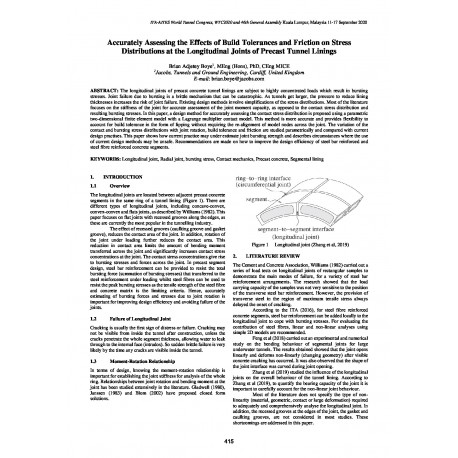Cart
0
0
No document
0,00 €
Total
Document successfully added to your shopping cart
Quantity
Total
There are 0 items in your cart.
There is 1 item in your cart.
Total documents
Total shipping
To be determined
Total
Search & filter
Search for a publication
Search & filter
Accurately Assessing the Effects of Build Tolerances and Friction on Stress Distributions at the Longitudinal Joints of Precast Tunnel Linings
id129
The longitudinal joints of precast concrete tunnel linings are subject to highly concentrated loads which result in bursting stresses. Joint failure due to bursting is a brittle mechanism that can be catastrophic. As tunnels get larger, the pressure to reduce lining thicknesses increases the risk of joint failure. Existing design methods involve simplifications of the stress distributions. Most of the literature focuses on the stiffness of the joint for accurate assessment of the joint moment capacity, as opposed to the contact stress distribution and resulting bursting stresses. In this paper, a design method for accurately assessing the contact stress distribution is proposed using a parametric two-dimensional finite element model with a Lagrange multiplier contact model. This method is more accurate and provides flexibility to account for build tolerance in the form of lipping without requiring the re-alignment of model nodes across the joint. The variation of the contact and bursting stress distributions with joint rotation, build tolerance and friction are studied parametrically and compared with current design practises. This paper shows how current practice may under estimate joint bursting strength and describes circumstances where the use of current design methods may be unsafe. Recommendations are made on how to improve the design efficiency of steel bar reinforced and steel fibre reinforced concrete segments.




